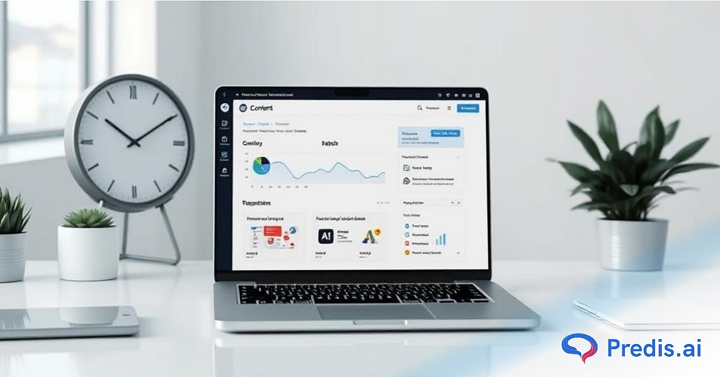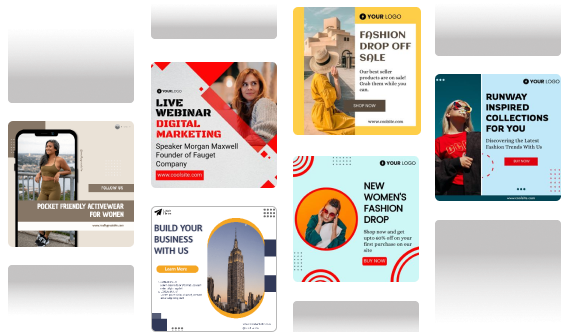As a business owner, you know that social media is a powerful tool to reach new customers and grow your brand. But what you might not know is that creating great social media content isn’t as easy as it looks. It might also take a lot of time as there is a lot that takes for creating content. To reduce the time required to create content, there are many tips in detail below.
When it comes to social media, content is king. Creating great content is essential to driving engagement and growing your audience. To create social media content that will resonate with your audience, you need to first understand who your audience is and what they are interested in. Once you know this, you can begin creating content that is relevant to them and that will encourage them to engage with your brand.
Deciding what content to post on social media can be tough. There’s a lot of pressure to post popular things that will gain many likes and retweets. But sometimes, the best content isn’t always the most popular. Sometimes, the best content is the content that is the most personal, or the most unique.
The best way to come up with social media content is to think about what you want to say, and then say it in the most interesting, engaging way possible. This might mean posting a personal story or sharing a behind-the-scenes look at your work. It might mean being vulnerable or sharing something you’re passionate about.
Understanding Content Creation
Content is at the core of any marketing plan. It’s the process of coming up with ideas that your target audience will love, shaping them into formats, and sharing them on the platforms where your audience is most active. Content creation is more than just writing a blog post or designing a graphic. It’s about delivering value consistently to build trust, engagement and guide your audience through the customer journey.
What is Content Creation?
Content creation is the process of coming up with topic ideas that will appeal to your target audience, writing or visualizing content around those ideas, and making that content available to your audience through various platforms. This is at the heart of marketing strategies as it makes businesses, brands, and products discoverable online. Whether it’s through blog posts, videos, infographics, or social media posts, content creation is what powers your online presence. It’s what makes search engines link to your website as the answer to someone’s question. By delivering valuable content consistently you attract, engage, and delight your prospects and customers, building relationships that lead to trust and loyalty airing this with SaaS Link Building services helps amplify that content, driving more traffic and strengthening overall SEO performance.
Why is Content Creation Important?
Content is at the heart of inbound marketing, a strategy that attracts customers by providing valuable content not pushing a product. By sharing free and useful content you bring potential customers to your profiles organically and establish your brand as an authority in your industry. Content creation also helps you maintain a strong social presence so you can grow your brand and reach a bigger audience. With good content you can increase visibility, drive traffic, and generate leads without spending hours a day. By engaging your audience with useful content consistently you can retain existing customers and convert prospects into followers.

Content Creation Planning and Strategy
Content creation doesn’t happen by chance; it needs planning and strategy. By planning your content in advance and aligning it to your business goals you can make sure every piece of content you produce has a purpose and contributes to your overall marketing objectives. Working with a content marketing agency can help streamline this process and ensure your strategy is effective.

1. Preparations for Content Creation
Before you start creating content you need to lay the foundations. This means defining your brand’s visual identity, planning your content in advance, setting content goals, and creating a target persona.
1. Define Your Brand’s Visual Identity
A visual identity is key to content creation and consistency across all platforms. Start by creating a style guide that includes your brand’s color palette, typography, and imagery guidelines. This visual identity should be recognizable and memorable so your audience can identify your brand at a glance. Consistency in visual elements saves time and reinforces your brand across different social media platforms making your content more cohesive and professional.
2. Plan Your Content in Advance
Content creation requires planning. Create a content calendar to map out your content in advance so your posts are timely and relevant. Set aside time each month to plan your social media content for the month ahead, including topics, hashtags, and your posting schedule. By planning ahead you can align your content to social media holidays, events, and trends so your content resonates with your audience. A content calendar also helps you maintain consistency in your posting which is key to keeping your audience engaged.
3. Set Your Content Goals
Content goals should be aligned with your marketing strategy and target audience. What do you want to achieve with your content, increase traffic, generate leads, or boost engagement? Make sure your goals are specific, measurable, achievable, relevant, and time-bound. Clear goals will guide your content creation process and provide a benchmark to measure your success. By setting clear goals you can create content that drives your business and meets your audience’s needs.
4. Create a Target Persona
A target persona is a semi-fictional representation of your ideal target audience based on market research. Creating a target persona helps you understand your audience’s demographics, needs, and pain points so you can tailor your content to their interests. Tools like MakeMyPersona can help you create a detailed document you can reference throughout the content creation process. By keeping your buyer persona in mind you can create content that resonates with your target audience making it more effective and engaging.
2. Streamlining Content Creation Process
Content creation can be time-consuming but with the right approach, you can simplify the process and maintain quality. This section covers practical tips and tools to help you organize tasks, reduce repetition, and increase efficiency so you can focus on creativity. Many businesses also rely on professional Content Writing Services to ensure their content remains consistent, high-quality, and aligned with their brand voice while freeing up internal resources.
1. Batch Similar Tasks Together
Batching similar tasks is a powerful way to increase efficiency and productivity in content creation. By grouping similar tasks such as creating visual content, writing captions, or scheduling posts you can get into a flow state that boosts productivity. For even greater productivity, consider using a Jira checklist to track progress and ensure nothing falls through the cracks. This way you minimize the mental energy spent switching between tasks and can complete the content creation process faster and more efficiently.
2. Use Templates to Speed Up Content Creation
Templates are a game changer when it comes to speeding up content creation. Consider using templates that are custom-designed for your brand and content requirements. Templates can be used for different types of content including social media posts, videos, and stories so you can have consistency and save time. By starting with a pre-designed template you can adapt it to your current campaign or message rather than creating everything from scratch. This will speed up the content creation process and maintain a consistent brand image across all platforms.
3. Factors Determining the Time Required to Create Content:
The time required to create content for social media can seem less, but it actually takes a long. To reduce the time required to create content, there are a lot of ideas, tips, and tricks that can be followed. Below are some factors that determine what content type requires what amount of time.
1. Number of posts –
The number of posts that one wants to publish in a day will determine the time required to create social media content. There is a specific number of posts that one should update per day to maintain reach and engagement. Hence it would naturally require a lot of time to ready the content for these posts. The more the number of posts, the more time is required.
It is advised to post at least one post per day on all the social media platforms. This will increase the reach and engagement. How successful your reach is will depend on the number of posts. Hence just posting randomly on social media is not enough.
The best time to post on social media as seen by engagement criteria is over the period from Tuesday to Thursday. The best time frame would be between 9 am to 10 am. This can take anything from 5 to 15 minutes and hence would take about an hour if posted on three social media platforms.
2. Type of content –
There are a variety of content types that can be posted on social media, and the time it takes to post can vary depending on the type of content. For example, a picture can be posted very quickly, but a video may take longer to upload. When it comes to social media content, there are a few different types that you can post. These include things like status updates, photos, videos, and more. Depending on the type of content that you want to post, it can take a different amount of time to post it.
For videos posted on Instagram and Facebook, the normal amount of time taken to film and post the content can take from one hour to a couple of hours. Tweets and sharing stories can take from 15 to 20 minutes, concerning thinking about the planning and writing the story/tweet. Planning and making the reel ready and posting it can take from 2 to 3 hours. The pictures posted also take a lot of time, with variations based on the content. It can take from 10 minutes to 20 minutes. A lot of time taken to create this post goes into the caption and hashtags as well.
3. Goals of posting on social media –
Most people understand that social media is a great way to stay connected with friends and family, but did you know that social media can also be a great way to achieve your business goals? When it comes to social media, there are a lot of different goals that people have for posting. Some people use social media as a way to stay connected with friends and family, others use it as a way to share their thoughts and feelings, and still, others use it as a way to promote their businesses or products.
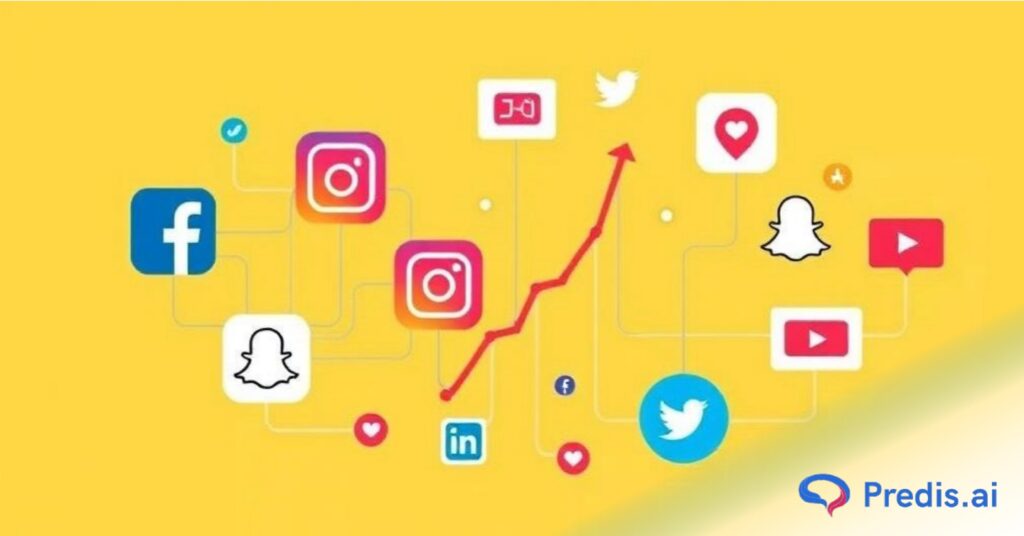
Social Media Goals
The goal of posting also determines the time required for creating content. If one just uses social media for interaction, then it does not take much time. For professional accounts it might take longer to create the content.
4. Creating ideas –
It can be difficult to come up with ideas for social media content, especially if you feel like you’ve already covered all the basics. Hence getting ideas for social media posts is the most difficult and time-consuming task. Most businesses underestimate the time required to create content for social media. Monitoring time spent on different content creation activities helps you understand where your resources are going and allows you to budget at least a few hours a week more effectively.
Creating content for social media can be time-consuming, but it doesn’t have to be. You can automate the content creation process by creating a content engine with minimal human input.

5. Caption and hashtag –
Hashtags and captions are two of the most important aspects of social media marketing. Hashtags help users to find your content, while captions give users a brief description of what your content is all about.
Creating hashtags and captions can take some time and effort, but it is worth it in the long run. Creating hashtags and captions can be time-consuming, but it’s worth it to make your posts stand out. Hashtags help people find your content, and a good caption can make your post more shareable.
deciding which caption and hashtags to go for is always a long task when posting something on social media. It requires a lot of research and decisions.
How to reduce the time required to create content:
Creating content can be time-consuming, but there are ways to reduce the amount of time it takes. By following some simple tips, you can create content more quickly and efficiently. Here are some tips to help you get started:

1. Make a Monthly Schedule –
When it comes to content marketing, planning is key. Creating a monthly schedule will help you stay organized and on track. Here are a few tips to help you get started:
1. Set realistic goals. Decide what you want to accomplish each month and make sure your goals are achievable.
2. Make a list of topics. Brainstorm ideas for blog posts, articles, social media updates, etc. that you can write about.
3. Assign deadlines. Once you have a list of topics, assign deadlines for when you want each piece of content to be published. This will help keep you accountable and on track.
4. Create a content calendar. Use a tool like Google Calendar or Trello to track your deadlines and publish date. This will help you visualize your workload and make sure nothing falls through the cracks.
Create a detailed Content Calendar
1. How to make a monthly calendar?
When it comes to creating content, planning is key to ensuring a cohesive and successful strategy. By creating a monthly schedule, you can map out what kinds of content you want to create and when you want to publish it. This will not only make the content creation process smoother but also help you to measure and track your progress. Here are some tips on how to create a monthly schedule for content planning:
1. Start by brainstorming the types of content you want to create. This can include blog posts, articles, videos, infographics, etc.
2. Once you have a list of content ideas, start mapping out when you want to publish each piece. Use a calendar or spreadsheet to keep track of your content schedule.
3. Make sure to leave some flexibility in your schedule in case you need to make any changes.
4. Once you have your content scheduled, start creating! And don’t forget to stick to your schedule!
2. Tools to use for content idea generation to reduce the time required to create content –
1. Predis.ai – Predis.ai has a content planning tool that can be used to generate content without the hassle and by saving time. They have a lot of other tools that can save you time and give you the best content.
2. Semrush.com – Semrush.com is a popular website that provides tools for online marketing, including keyword research, competitive analysis, and link building. The website also offers a blog with articles on topics such as online marketing tips, SEO, and social media. Semrush.com has an amazing content idea generation tool that can be used to generate content ideas for making the content calendar for a month.
3. Simplified.com – Simplified.com provides social media marketing tools that help businesses grow their online presence and reach their target audiences. Their platform is easy to use and helps businesses save time and money by simplifying the process of managing their social media accounts.
3. Do’s for content planning –
As a business, you can’t just jump on the social media bandwagon and start posting without a plan. That’s a recipe for social media disaster. You need to take a step back, assess your goals, and create a content strategy that will help you achieve those goals. Not sure where to start? Here are a few do’s for social media content creation planning:
1. Do your research – Before you start creating content, you need to do your research. What platforms is your target audience using? Also what kind of content do they engage with? What kind of tone should you use? Answering these questions will help you create content that resonates with your audience.
2. Do set goals – What do you want to achieve with your social media content? More website traffic? More leads? Also more sales? Once you know your goal, you can create content that is designed to achieve it.
3. Do create a content calendar – Creating a content calendar will help you stay organized and on track. map out what content you want to create and when you want to post it. This will help you stay consistent and prevent you from feeling overwhelmed.
4. Do outsource – If you don’t have the time or resources to create social media content on your own, consider outsourcing. There are plenty of talented content creators out there who can help you achieve your goals.
5. Do measure your results – Once you start posting, take the time to measure your results. Which pieces of content are performing well? What’s your click-through rate? What’s your conversion rate? Analyzing your results will help you adjust your strategy and create even better content down the line.
4. Dont’s –
1. Don’t be afraid to experiment – When it comes to social media content, there is no one-size-fits-all approach. What works for one brand may not work for another, so it’s important to experiment until you find what works best for you.
2. Don’t neglect the power of visual content – With social media, visual content is more important than ever. People are more likely to engage with and share images and videos than they are with text-based posts.
3. Don’t forget to be human – Your social media followers are real people, not just numbers. When creating content, always keep this in mind and try to produce content that is interesting, entertaining, and relatable.
4. Don’t Be Afraid to Experiment – Using popular AI-assisted content humanizing tools, you can quickly refine your content to sound more natural and human, helping it genuinely connect with your audience.
4. Don’t post too often – If you’re posting too much, you’re likely to turn off your followers. Find a balance that works for you and stick to it.
5. Don’t be afraid to use paid promotion – Paid social media promotion can be a great way to reach a larger audience and promote your content. Just be sure to target your ads carefully so that they are relevant to your target audience.
2. Create pictures and videos –
One can save time in creating social media content by using following tricks,
1. Plan ahead – Decide what kind of pictures or videos you want to create, and what kind of content you want to include. This will help you stay focused and avoid getting overwhelmed. Additionally, choosing a DAM system can make this planning process easier by keeping all your images, videos, and other assets organized in one place, so you can access them quickly when creating content.
2. Get creative – Use props, lighting, and different angles to add interest to your photos and videos.
3. Be sure to edit – No one wants to see a picture that’s blurry or a video with bad sound quality. Take the time to edit your content so that it’s polished and professional.
4. Use free stock photos – There are a ton of websites that offer free stock photos that you can use for your blog posts, social media posts, etc. Just make sure to read the terms of use before using any of the photos to make sure you’re not violating any copyright laws.
5. Create your own visuals – If you have a knack for photography or graphic design, put those skills to use and create your own visuals. Not only will this save you money, but you’ll also have complete control over the look and feel of your visuals.
6. Hire a professional – If you have the budget, hiring a professional photographer or videographer can be a great investment. Not only will you get high-quality visuals, but you’ll also get the peace of mind of knowing that your visuals are in good hands.
1. Take inspiration –
For pictures, try using striking visuals that will capture attention. This could be a close-up of an interesting object, an action shot, or a beautiful landscape. If you’re taking pictures of people, make sure to get their permission first.
For videos, consider using creative animations, DIY tutorials, vlogs, or even just a tour of your office or workspace. You can also get creative with your video editing and use fun effects or filters. Whatever you choose, make sure your videos are entertaining and informative.
2. Type of video and image content and it’s importance in content posting –
a. Single post –
As a social media marketer, you might be wondering if a single post really matters. After all, you’re posting content regularly, so one post doesn’t seem like that big of a deal. However, a single post can make a big impact on your social media marketing efforts. Here’s why: A single post can reach a large number of people.
Even if you have a small following on social media, a single post can be seen by a lot of people if it’s shared by your followers. This can lead to more people becoming aware of your brand and what you have to offer. A single post can be very engaging. If you create a post that’s interesting and engaging, it can encourage people to interact with your brand. This interaction can be in the form of likes, comments, and shares.
When people interact with your content, it can help to build a relationship with them. A single post can be a powerful marketing tool. If you use a post to promote a product or service, you can reach a lot of people with your marketing message. This can lead to more sales and more customers for your business. So, as you can see, a single post can actually be quite important for your social media marketing efforts. Make sure that you’re creating quality content that can help you achieve your marketing goals. Partnering with a UX consulting company can also ensure your digital touchpoints are designed to maximize engagement and conversions.
b. Carousel post –
Carousel posts are a form of the social media marketing that involves posting multiple images or videos in a single post. These posts are popular on platforms like Facebook and Instagram and can be an effective way to share multiple pieces of content at once.
Carousel posts can be especially effective for businesses and brands that are trying to promote multiple products or services. For example, a clothing brand could use a carousel post to showcase its new spring line. Or, a food company could use a carousel post to feature different recipes that can be made with its products. Carousel posts are also a great way to tell a story.
For example, a travel brand could use a carousel post to share photos and videos from a recent trip. This can help to engage followers and give them a behind-the-scenes look at what goes into planning and taking a trip. Overall, carousel posts are a versatile and effective tool for social media marketing. They can be used to promote multiple products or services, tell a story, or simply share multiple pieces of content at once. If you’re looking for a way to add some variety to your social media posts, consider using carousel posts.
c. Video –
Video is one of the most powerful marketing tools available, yet so many businesses are not using it to its full potential. When used correctly, video can help businesses to improve their brand awareness, generate leads, and boost sales. There are several reasons why video is so effective, but one of the main reasons is that it is highly engaging.
People are more likely to watch a video than to read a piece of text, and they are also more likely to remember what they have seen. Another reason why video is so effective is that it allows businesses to show off their products and services in a way that is very visual and easy to understand. A video can be much more effective than a written description, and it can also be a lot more fun.
d. Story –
There’s no doubt that social media marketing is a powerful tool for businesses. But what often gets overlooked is the importance of story posts in social media marketing. Sure, promoting your products and services is important. But if you’re only doing that, you’re missing out on a huge opportunity to connect with your audience on a deeper level. And that’s where story posts come in. Story posts humanize your brand and make you more relatable.
They give your audience a behind-the-scenes look at your business and show them what you’re all about. And when done right, they can be extremely effective at driving sales and engagement. So if you’re not already incorporating story posts into your social media marketing, now is the time to start. They just might be the key to taking your business to the next level.
e. Reels –
A key reason for using reels is that social media platforms offer a great way to connect with potential and current customers. Another reason social media is so important for businesses is that it provides a way to share content, such as blog posts, infographics, and images.
This content can help to promote your brand and attract new customers. One of the most effective ways to share this content is through the use of video. Videos can be very powerful marketing tools, and using them on social media can be a great way to reach a large audience. However, creating videos can be time-consuming and expensive. This is where reels come in. Reels are short, easy-to-make videos that can be used on social media platforms such as Instagram and Facebook.
They are a great way to share engaging content without having to invest a lot of time or money. If you’re not already using reels as part of your social media marketing strategy, we highly recommend you start. Here are a few reasons why:
- Reels are quick and easy to make
- Reels can be very engaging
- Reels are a great way to reach a large audience
- Reels can be used to promote your brand
- Reels are a great way to drive traffic to your website
Overall, reels are a great way to improve your social media marketing. If you’re not already using them, we encourage you to give them a try.
f. YouTube video –
YouTube videos can help businesses in several ways. Here are a few reasons why you should be using YouTube videos in your social media marketing:
– They can be used to generate leads, drive traffic to your website, or even just engage with your audience and build relationships.
– They’re More Engaging than Text: Videos are more engaging than text or even images. They are more likely to hold people’s attention and get them to stick around longer.
– They’re More Shareable: Videos are also more shareable than text or images. People are more likely to share a video they enjoyed than a blog post or article, making blog-to-video content a smart way to boost engagement.
– They Help You Stand Out: With so much content being produced, it can be hard to make your business stand out. But with video, you can really set yourself apart from the competition. They’re
– More Memorable: People are more likely to remember a video they’ve seen than something they’ve read or an image they’ve seen. So if you want your content to be remembered, video is the way to go. As you can see, there are a lot of good reasons to use YouTube videos in your social media marketing. If you’re not already using them, now is the time to start.
g. YT shorts –
YouTube Shorts are short videos (15 seconds or less) that are perfect for social media. They’re easy and quick to make, and they’re highly shareable. Plus, they’re great for driving traffic to your website or YouTube channel. Here are a few more reasons why you should consider using YouTube Shorts for your social media marketing:
1. They’re perfect for mobile users.
2. They’re attention-grabbing.
3. They’re easy to make.
4. They’re great for driving traffic.
5. They’re highly shareable.
YouTube Shorts are a great way to take your social media marketing to the next level.
3. Tools to use to to reduce the time required to create content –
1. Predis.ai – If you’re looking for a video creation tool that can help you easily create engaging and professional-looking videos, then you should definitely check out Predis.ai. With Predis.ai, you can create videos from start to finish without having to worry about any of the technical aspects of video production. That means no more worrying about things like framing, or editing.
2. Steve.ai – Steve.ai is a cloud-based video creation platform that anyone can use to create professional-looking videos. It’s perfect for creating marketing videos, product demos, explainer videos, and more. And the best part is, you don’t need any prior video editing experience to use it.
3. Flexclip.com – Flexclip is a great tool for creating videos. It’s easy to use and has a lot of features that make it versatile. You can create videos for just about anything with Flexclip. With Flexclip, you can create beautiful and professional-looking videos without spending hours in front of a computer.
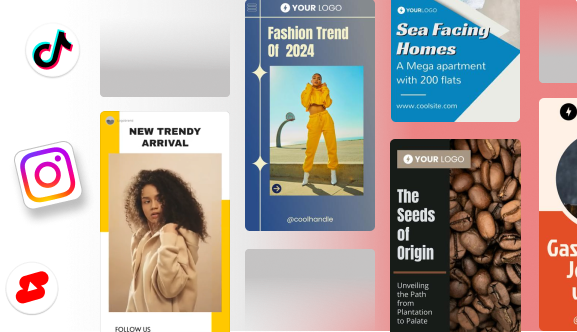
3. Posting/Scheduling tool –
As a busy social media marketer, you’re always looking for ways to optimize your time and increase your efficiency. Post-scheduling through AI can help you do just that! By using AI to schedule your posts, you can take a lot of the guesswork and manual labor out of the equation. AI can help you figure out the best time to publish your content, based on engagement data, past performance, and a variety of other factors.
Not only can AI help you schedule your posts, but it can also help you optimize your content for maximum engagement. AI can analyze your content and make recommendations for how to improve it, based on engagement data and other factors. If you’re looking to save time and increase your efficiency, AI can be a valuable tool. Post-scheduling through AI can help you free up your time so that you can focus on other aspects of your business.
1. How to select a post scheduling tool –
Scheduling tools help you to plan and schedule your content in advance. This means that you can batch-create content, and then schedule it to be published automatically. This can save you a lot of time in the long run. There are several different post-scheduling tools available. Some are paid, and some are free. However, there are a few key features that you should look for in a good post-scheduling tool.
Firstly, it should be easy to use. You shouldn’t have to spend hours trying to figure out how to use the tool.
Secondly, it should be reliable. You should be able to schedule your content and know that it will be published on time, without any hitches.
Thirdly, it should be affordable. There’s no point paying a fortune for a post-scheduling tool when there are many excellent free options available. Finally, it should have good customer support. If you have any problems with the tool, you should be able to get help from the company quickly and easily.
2. Posting frequency for different platforms –
a) Instagram –
It’s no secret that the more you post on Instagram, the more reach you’ll get. But there’s a sweet spot when it comes to posting frequency – too little and you won’t be seen, too much and you’ll start to lose followers. So what’s the perfect posting frequency on Instagram for reach?
The answer is 1-2 times per day. This posting frequency results in the greatest number of interactions (likes, comments, shares) per post. Of course, this varies depending on your audience and your content. If you’re posting very high-quality images or videos, you can get away with posting less often. But if you’re posting lower-quality content, you’ll need to post more often to keep your followers engaged. Experiment with different posting frequencies and see what works best for your account. And don’t forget to use hashtags, and other engagement tactics to reach even more people!
It is best to post between 9 AM to 12 PM on Instagram. This time frame will catch you a high spike in reach and audience. The best days to post this content are Tuesdays through Thursdays.
b) Facebook –
If you’re trying to reach a wide audience, posting more often is better. This way, you’ll have a better chance of appearing in people’s News Feeds. However, if you’re posting too often, you might annoy your fans and cause them to, unlike your page. It’s also important to consider the quality of your content. If you’re posting multiple times a day, but your content is uninteresting, you’re not going to get very far. Make sure that every post is engaging and worth people’s time.
Finally, think about your goals. If you’re trying to generate leads or sales, you’ll want to make sure that your posts are promoting your product or service. If you’re just trying to build brand awareness, you can be a little more creative with your content.
The best time to post on Facebook is weekdays from 6 AM to 12 PM.
c) Twitter –
If you’re posting too often, you risk annoying your followers and driving them away. But if you don’t post often enough, you won’t be able to build up a following.
Here are a few general tips:
– If you’re just starting out on Twitter, aim for 1-2 tweets per day.
– As you grow your audience, you can increase your posting frequency to 3-5 times per day.
– If you’re sharing mainly links to your blog posts, you can get away with tweeting more often. But if you’re sharing a mix of content, limit yourself to 1-2 tweets per hour.
– If you’re trying to build up a following, it’s important to be consistent with your posting. So if you can’t tweet every day, try to tweet every other day.
The most important thing is to experiment and find what works for you. There’s no magic number of tweets that will guarantee success. It all depends on your specific audience and goals.
d) YouTube –
If you’re looking to increase your reach on YouTube, then posting frequency is a key factor to consider. The more often you post, the more likely your viewers are to see your content and engage with it. Of course, there’s a balance to be struck here. You don’t want to overload your viewers with too much content, or you risk them becoming disengaged. Finding the right posting frequency will vary depending on your audience and the type of content you’re posting.
As a general rule of thumb, aim to post at least once a week, and build up from there if you’re seeing good engagement. Experiment and see what works best for you and your channel. And always remember to focus on quality over quantity – it’s better to have a few great videos than a ton of average ones.
YouTube shots are better to be posted around two times a day. The best time to post content on YouTube is between 3 PM to 9 PM.

3. Benefits of posting consistently –
There are many benefits of posting consistently on social media. Perhaps the most obvious benefit is that it helps to keep your name and your brand in front of your audience. If you’re not constantly reminding people that you exist, they’re likely to forget about you.
Posting consistently also helps to build trust with your audience. If you’re always showing up and being consistent, your audience will know that they can count on you. This is especially important if you’re using social media to promote your business. You want your customers and clients to know that they can rely on you.
Finally, posting consistently on social media can help you to attract new followers and grow your audience. If you’re always putting out high-quality content, people will take notice and they’ll be more likely to follow you. If you’re not posting regularly, you’re missing out on this opportunity.
4. Tools to schedule post to reduce the time required to create content –
1. Predis.ai – Predis.ai is a very good post-scheduling website. They support all major social media platforms, you can link your accounts safely and schedule your posts with a click. Also, they have other services with social media marketing, competitor analysis, video and image generation, and even hashtag generation. They have a lot of free tools as well. Be sure to check them out for the best social media marketing tools.
2. Hootsuite – Hootsuite is a social media management platform that helps you to save time by scheduling your posts in advance. You can connect all of your social media accounts to Hootsuite and then compose your posts in one central location. Once you have scheduled your posts, Hootsuite will automatically publish them at the time and date you have specified.
3. Buffer – Buffer is a popular social media management tool that allows users to schedule posts in advance. They also have other social media marketing tools, Also a few start-up’s can further streamline operations by pairing tools like Buffer with business credit cards with high limits for managing software subscriptions and marketing expenses.
Tools and Software for Content Creation
To make your content creation process more efficient and effective you need the right tools and software. These tools not only simplify content creation but also help you manage, schedule, and analyze your content so you can hit your marketing goals.
Using AI to reduce the time required to create content:
There are a number of ways you can use AI to reduce the time it takes to create content. For example, you can use AI to help you research and gather data. AI can also help you come up with ideas for content and even write the content itself. However, AI-generated content doesn’t always sound natural. That’s why it’s important to Humanize AI content by editing it to match your tone and make it more reader-friendly.
Of course, AI is not a panacea. It will not replace the need for human creativity and intelligence. But it can definitely help you save time in the content creation process. And that’s time that you can use to make more money. AI can save a lot of time by generating content within minutes, especially when used with a humanizer to make the output sound more authentic and human-like, thus helping to reduce the time required to create content.
1. Caption generator –
An AI caption generator is a tool that can automatically generate captions for images. This can be useful for adding captions to images for websites, blogs, or other online content. There are several different AI caption generators available, and they can vary in terms of accuracy and features. Some AI caption generators can also generate tags or keywords for images, which can be helpful for SEO.
There are several AI caption generators available, and they all work slightly differently. Some require you to upload your photos to their platform, while others can generate captions directly from your camera roll. To get started, simply choose a platform and follow the instructions. most AI caption generators will ask you to select the photos you want to add captions to, and then you’ll be able to review the generated captions and edit them as you see fit.
Tools to generate captions to reduce the time required to create content –
1. Copy.ai – Copy.ai is an AI-powered website with over 90 + copywriting tools. They have a free plan where one can generate a limited number of captions. Paid plans are 46$ per month with a 40k word generation capacity. This will help you generate a lot of captions.
2. Predis.ai – Predis.ai has a whole social media marketing package where one can generate captions, images, videos, and even hashtags. They also have a background remover and post scheduler. This will help a lot to reduce the time required to create content.
3. Hypotenuse.ai – Their basic plan is 29$ a month. They have caption generation and a number f other tools. They also have image generation and product description generator which will help with the time saving during creating content.
4. Anyword.com – They charge about 24$ a month and provide a lot of tools among which is the caption generator. They have other copywriting tools as well which one can use.
5. Copysmith.ai – They have a caption generator as well as an ad generator. They charge about 19$ a month. They also have an option where one can generate product descriptions.
2. Hashtag generator –
If you’re looking for a way to make your social media posts more relevant and engaging, then you should try using an AI hashtag generator. There are several different tools available that can help you find the right hashtags for your posts, and they can be a great way to get more eyes on your content.
Using an AI hashtag generator is simple. Just enter in the keyword or phrase you want to use, and the tool will generate a list of relevant hashtags. You can then copy and paste the hashtags into your post, or use them as inspiration for your own.
There are a few things to keep in mind when using AI hashtag generators. First, you’ll want to make sure that you’re using relevant keywords so that the tool can generate accurate results. Second, you’ll want to use a mix of popular and niche hashtags to reach a wider audience. And finally, don’t forget to edit your hashtags to make them more unique to your brand.
Tools to generate Hashtags to reduce the time required to create content –
1. Predis.ai – Predis.ai has the best content marketing tools and the Hashtag generator by this website is free to use. They have other features as well, for example – the post scheduler and image generators. The pricing starts from 20$ a month. They also have a free plan.
2. all-hashtag.com – They are purely a Hashtag generation website with about 4 Hashtag generation tools. It is a free website.
3. Toolzu.com – This website has a Hashtag generator along with image editing tools as well. They have a profile analyzer and username generator that one can use.
Content Creation Strategies
Creating content is just the beginning. To make it work, you need strategies. This section covers techniques like repurposing content, writing efficiently, and promoting across channels to get more visibility and engagement from your efforts.
1. Repurpose and Recycle Your Content
Repurposing and reusing content is an efficient way to extend the life of your social media content. By reusing images, animations, or topics you can save time and keep your brand messaging consistent. For example, a blog post can be broken down into several social media posts or a popular image can be used in a different context with a new caption. A content library can help you keep track of your assets and find content to reuse. This saves time and reinforces brand recognition and product recall with your audience.
2. Write Efficiently and Effectively
When it comes to writing content the key is to write fast and edit slow. Get your ideas down quickly, and focus on the main message. Once you have a draft, take your time to edit and refine your copy to make sure it’s on brand and resonates with your audience. To make it even easier use a caption formula to write social media captions that engage and convert your audience. And use social media tools to schedule and publish your content so you can focus on other important tasks.
3. Promote Your Content
Creating great content is only half the battle; promoting it is just as important. Use multiple channels like social media, email marketing, and pay-per-click advertising to promote your content and reach your audience. Meet your audience where they are by promoting your content on the platforms they use most. A headless content management system can host and display your social media content on your website so your audience can easily find it. By promoting your content you can get more visibility, drive traffic, and generate leads.
1. Tracking Content (Analytics)
To improve your content creation process you need to measure and track your content. This section will show you how to use data to get information about your content.
1. Analyzing Your Content Performance
Tracking your content regularly is key to knowing what works and what doesn’t. Use data to measure key metrics like engagement, clicks, and conversions. These metrics will tell you if your content is working and if it’s meeting your goals. By identifying patterns and trends you can adjust your content to fit your audience better. Continuous tracking means your content will get better and better over time.
2. Make Data-Driven Decisions
Making data-driven decisions is key to optimizing your content creation. Tools like Google Analytics and dbt cloud give you detailed insights into your content’s performance so you can make informed decisions. By measuring your content’s success through these tools you can see what’s working and what’s not and adjust your strategy for better results. Whether it’s changing your posting schedule, refining your message, or trying out different content formats, data-driven decisions mean your efforts are aligned with your goals and delivering the outcomes you want.
2. Optimization and Efficiency
Creating content is one thing but optimizing it for each platform and making your workflow efficient is just as important. This section is about optimizing your content and your workflow to be more productive.
1. Optimize Your Content for Each Social Media Platform
To get maximum engagement and reach you need to optimize your content for each social media platform. Each platform has its own unique features, audience, and best practices so optimize your content for each one. For example use high-quality visuals and short captions for Instagram, links, and discussions for Twitter. A social media tool can help you schedule and publish your optimized content so it goes live at the right time for maximum impact. By understanding the quirks of each platform you can create content that resonates with your audience and gets engagement.
2. Set Up a Content Library to Organize and Reuse Your Content
A content library is a central hub where you store all your visual and written content assets. Setting up a content library means you can store and access your content easily and save time and be more productive. Tools like Predis and Hootsuite have content management features that let you categorize and tag your assets so you can find them quickly. By having a content library you can find and reuse content quickly and maintain consistency across all your social media platforms. This means the content creation process is streamlined and your brand is cohesive. With the right CMS Development Company, the content creation process becomes more streamlined, and your brand stays cohesive.
3. Create Engaging Content with Predis.ai
Grab your audience’s attention effortlessly with Predis.ai, an all-in-one platform for stunning visuals and videos. No need for multiple tools – Predis.ai handles it all in seconds, keeping your content on-brand. Plus, its AI-driven features allow you to schedule and publish posts seamlessly, ensuring your content reaches your audience at the right time.
Use Social Media Management Feature to Streamline Your Workflow
Predis.ai simplifies social media management by combining powerful content creation with scheduling, interaction management, and performance tracking. Manage all your platforms in one place for a cohesive content strategy and access valuable analytics to improve your approach. Whether managing one account or multiple, Predis.ai makes the entire process efficient and hassle-free.
3. Content Creation Trends to Watch in 2024
As we head into 2024, content is changing, driven by new tech and shifting audience habits. To stay ahead of the game, brands need to look at the current trends. In this section we’ll look at the trends to watch and how you can adapt your approach to be relevant and engage with your audience.
1. The Rise of Short-Form Video Content
Short-form video content, like Instagram Reels, YouTube Shorts, and TikToks are still ruling social media. With attention spans decreasing, these bite-sized videos are perfect for grabbing attention and getting your message across quickly. Brands are increasingly using this format to show products, share tips, and engage with their audience in a more visual way.
2. User-Generated Content (UGC) as a Trust-Building Tool
User-generated content is becoming a key strategy for brands looking to build trust and authenticity. By getting customers to share their experiences with your products or services on social media, you can create a library of content that resonates with potential customers. UGC is often seen as more trustworthy and relatable than brand-generated content, so it’s a great tool for driving engagement and conversions.

3. Personalization and Hyper-Targeted Content
In 2024 personalization is more important than ever. Audiences expect content that speaks directly to them. This trend involves creating hyper-targeted content for specific audience segments. Using data and analytics brands can deliver personalized experiences that drive higher engagement and deeper connections with their audience.
4. Common Content Creation Mistakes to Avoid
Creating great content is hard, even for the most experienced marketers. We all make mistakes. These mistakes can kill your content and your brand. In this section, we’ll look at the most common content creation errors and offer practical advice on how to avoid them. So that your content resonates with your audience and achieves your marketing goals.
1. Overloading on Promotional Content
While you need to promote your products or services, constantly pushing sales content can turn your audience off. Balance is key—mix in promotional posts with educational, entertaining, and inspirational content so your audience stays engaged and interested in what you have to say.
2. Ignoring the Power of Storytelling
Storytelling is a powerful content creation tool but many brands are missing out on its power. A good story can make your content more memorable and relatable and help create an emotional connection with your audience. Whether it’s customer success stories, behind the scenes, or the journey of your brand. Incorporating storytelling can add massive value to your content.
3. Failing to Optimize for Mobile
Most social media users are accessing platforms on mobile so you need to make sure your content is mobile-friendly. This means using responsive design, optimizing images and videos for fast load times and making sure your text is readable on smaller screens. Failing to do so will give your audience a poor user experience and lower engagement.
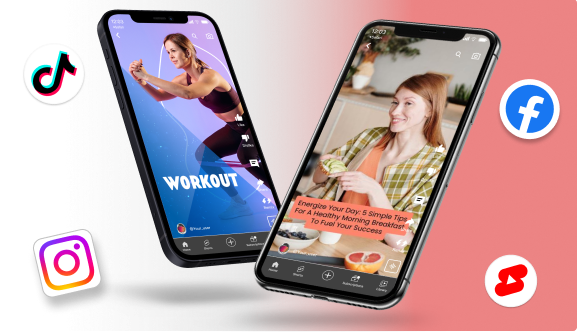
What is a Social Media Workflow?
A social media workflow is a process that outlines the steps to create, publish, and manage social media content. It includes content planning and creation, scheduling, publishing, and analysis. A defined workflow will help streamline your social media activity and make it more efficient and manageable. By having a social media workflow you can make sure your content creation is organized, consistent, and aligned to your overall marketing strategy. This saves time and helps maintain the quality of your social media. A well-organized workflow helps you stay consistent and efficient. Managing multiple accounts, content approvals, and email updates can easily become overwhelming, using the best email clients designed for productivity and multi-account management can save hours every week by centralizing communications in one place.
1. Benefits of Using a Social Media Management Workflow
Having a social media management workflow has several benefits. First, it makes you more efficient by streamlining the content creation and publishing process. By following a process you can reduce the time spent on repetitive tasks and focus on the strategic stuff. Second, it ensures consistency in your social media content so you can maintain a consistent brand across all platforms. Third, it clarifies roles and responsibilities so everyone involved in social media knows what’s expected of them. Finally, it allows you to track and analyze so you can measure the success of your social media and make data-driven decisions.
2. Tips for Creating a Social Media Workflow: Best Practices to Follow
Creating a social media workflow requires planning and consideration of your team’s needs and resources. A workplace chat can help your team stay aligned and respond quickly as tasks move through the workflow. Here are some best practices:

1. Establish Roles and Responsibilities
One of the first steps in creating a social media workflow is to define roles and responsibilities. Who will be responsible for each part of social media management, from content creation and scheduling to monitoring and analysis? By defining these roles you can make sure everyone knows what’s expected of them and all tasks are covered. This will make it more efficient and prevent gaps or overlaps.
2. Consider Legal and Regulatory Compliance
When creating a social media workflow consider legal and regulatory compliance. This means all content must adhere to relevant laws, regulations, and industry guidelines. For example, if you’re in a regulated industry like finance or healthcare you may need to get certain posts approved by legal or compliance teams before publishing. By including compliance checks in your workflow you can avoid legal issues and make sure your content is safe and appropriate.
3. Plan Ahead with a Content Calendar
Planning is key to social media success. Use a content calendar to plan your posts in advance so your content is timely, relevant, and consistent. A content calendar will also help you align your social media with broader marketing campaigns and events. By planning ahead you can avoid last-minute scrambles and make sure your content is thought out and aligned to your goals.
4. Leverage Artificial Intelligence and Automation
AI and automation tools can help your social media workflow a lot. Use AI-powered tools to generate content ideas, schedule posts, and even automate responses to common questions. If you often deal with screenshots or scanned documents, an AI-powered OCR tool available on Cardscanner.co can help extract text from image files quickly for reuse across your channels. Automation can also help with content publishing and tracking so you can free up time for the strategic stuff. By using AI and automation you can streamline your workflow, be more efficient, and focus on the tasks that require human creativity and judgment.
5. Iterate Your Workflows as Needed
A social media workflow should be flexible. As your social media strategy changes you may need to iterate your workflow to keep up with the changes and goals. Review and refine your workflow regularly to make sure it’s working and aligned to your overall strategy. By iterating your workflow you can stay ahead of the curve and make sure your social media is always optimised for success.
So there you have it. Follow these best practices and you’ll have a social media workflow that’s efficient, consistent, and effective. Whether you’re a small business or a large social media strategy.
Summary of How to Reduce Time Required to Create Content:
Creating content can be a time-consuming process, but there are a few things you can do to speed things up.
1. Plan your content in advance. This will help you to have a clear idea of what you want to write about and will make the actual writing process quicker and easier.
2. Write in batches. rather than creating one piece of content at a time, try writing a few pieces all at once. This will help you to get into a flow and will make the overall process faster.
3. Use templates. If you find yourself writing similar types of content regularly, create a template that you can use as a starting point. This will save you time in the long run, as you won’t need to start from scratch each time.
4. Leverage technology. There are several tools and apps that can help you to write and create content more quickly. Do some research to find the ones that will work best for you and your workflow.
5. Automate where possible. There are some content creation tasks that you can automate, such as social media posts or email newsletters. This can free up your time to focus on other things.
6. Delegate or outsource. If you have someone else on your team who can help with creating content, delegate tasks to them. Or, if you have the budget, you could outsource some of your content creation to freelancers.
By following these tips, you can reduce the time required to create content, freeing up your time to focus on other things.
Wrapping it up
If you want to reduce the amount of time you spend creating content, follow the tips mentioned in the above blog. The content schedulers, caption generator, and Hashtag generating tools mentioned are a great help in creating content and saving time. The best way to reduce the time required to create content is to be organized, have a clear plan and use tools to your benefit. By knowing what you need to do and when you need to do it, you can save a lot of time. Additionally, batching your content creation can help you to be more efficient and to get more done in less time.
Content creation can be a time-consuming process, but there are a few ways to speed things up. Use these tools, but make sure to check the quality of the content as well. Content generation with the help of tools can save time but do not compromise with the quality of the content in the process. Finally, use a tool to do the heavy lifting for you.



